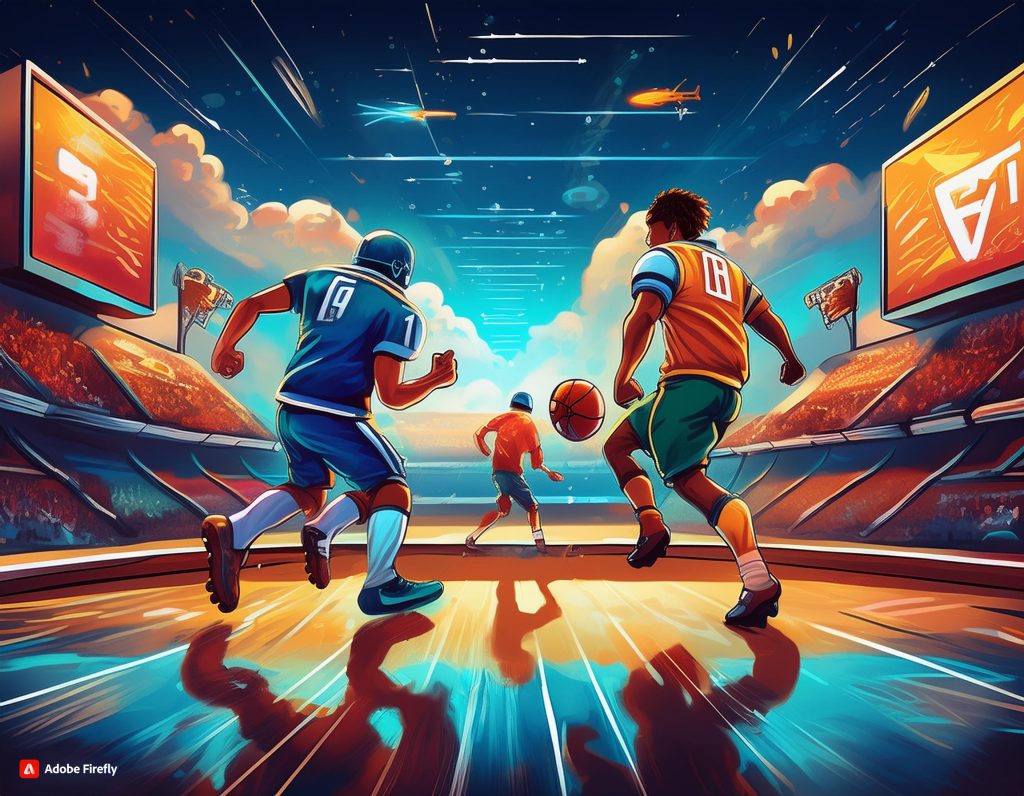
The evolution of sports games over the decades mirrors the rapid advancements in technology, graphics, gameplay mechanics, and player engagement. From the simplistic beginnings of arcade classics like Pong to the immersive experiences of modern titles like FIFA 24, this article traces the transformative journey of sports gaming, highlighting key milestones, technological innovations, and the impact on gaming culture.
Early Beginnings and Arcade Classics
Sports gaming emerged in the early 1970s with simple, text-based simulations and arcade-style games. One of the earliest and most iconic sports games was Pong (1972), a tennis simulation that featured basic 2D graphics and simplistic gameplay. Pong laid the foundation for future sports titles by introducing competitive gameplay and multiplayer modes, setting a precedent for innovation in gaming.
Rise of Consoles and 8-bit Era
The 1980s marked the rise of home gaming consoles such as the Atari 2600 and the Nintendo Entertainment System (NES). Sports games evolved with improved graphics and gameplay mechanics, transitioning from 2D sprites to more detailed 8-bit graphics. Titles like “Tecmo Bowl” (1987) and “Double Dribble” (1986) brought football and basketball simulations to home consoles, introducing multiplayer modes and strategic gameplay elements.
Technological Advancements in the 16-bit and 32-bit Era
The 1990s witnessed significant advancements in graphics and processing power with the introduction of 16-bit and later 32-bit consoles such as the Sega Genesis, Super Nintendo, and Sony PlayStation. Sports games became more realistic and immersive, incorporating motion-captured animations, enhanced AI, and licensed player likenesses. Titles like “NBA Jam” (1993), known for its over-the-top gameplay and iconic announcer, and “FIFA International Soccer” (1993), which introduced realistic player movements and international teams, exemplified the era’s innovation in sports gaming.
Transition to 3D Graphics and Simulation
The late 1990s and early 2000s marked a shift towards 3D graphics and simulation-based gameplay. Consoles like the Sony PlayStation 2 and Microsoft Xbox enabled developers to create more lifelike sports simulations with enhanced visuals and physics engines. Games like “Tony Hawk’s Pro Skater” series (1999) and “Madden NFL” series (1990-present) set new standards for realism, player control, and multiplayer experiences, attracting a broader audience of sports enthusiasts and gamers alike.
Online Connectivity and Multiplayer Experiences
The 2000s saw the integration of online connectivity and multiplayer modes in sports games, transforming how players interacted and competed globally. Titles like “EA Sports FIFA” series (1993-present) and “NBA 2K” series (1999-present) introduced online leagues, tournaments, and cooperative gameplay, fostering a community-driven approach to sports gaming. Online features enabled real-time updates, player customization, and esports competitions, further blurring the lines between virtual and real-world sports experiences.
Modern Era: Realism, Immersion, and Esports
In the current era, sports games have reached unprecedented levels of realism, immersion, and competitive gameplay. Powered by advanced graphics engines, motion capture technology, and artificial intelligence, titles like “FIFA 24” and “NBA 2K24” deliver lifelike player movements, dynamic weather conditions, and stadium atmospheres. Esports tournaments and streaming platforms have propelled sports gaming into a global phenomenon, attracting professional players, sponsors, and a massive online audience.
Future Trends and Innovations
Looking ahead, the future of sports gaming promises continued innovation with advancements in virtual reality (VR), augmented reality (AR), and cloud gaming technologies. These developments will enhance player immersion, accessibility, and interactivity, offering new opportunities for realism and customization in sports simulations. As technology evolves, sports games will likely continue to evolve, blurring the boundaries between virtual entertainment and real-world sports experiences.
Conclusion
The evolution of sports games from Pong to FIFA 24 reflects not only technological advancements but also the evolving expectations of gamers and sports enthusiasts. With each generation of consoles and advancements in graphics, gameplay mechanics, and online connectivity, sports games have grown more immersive, realistic, and inclusive. As developers push the boundaries of innovation, the future of sports gaming holds exciting possibilities for virtual experiences, competitive esports, and global community engagement, shaping the landscape of gaming for years to come.